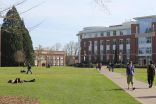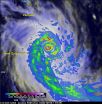(Press-News.org) COLUMBUS, Ohio - Cardiovascular researchers at The Ohio State University Wexner Medical Center have shown that a protein known as MG53 is not only present in kidney cells, but necessary for the organ to repair itself after acute injury. Results from this animal model study are published in the journal Science Translational Medicine.
Previous work by Jianjie Ma, a professor and researcher in Ohio State's Department of Surgery and the Dorothy M. Davis Heart & Lung Research Institute, identified and proved that MG53 repairs heart, lung and skeletal muscle cells as well.
"MG53 is a key component of cellular self-repair. Identification of MG53 as a vital component of reno-protection could lead to new preventive or therapeutic treatments for acute kidney failure," Ma said.
Acute kidney injury (AKI) is common because the kidneys can be stressed by various medical conditions and treatments, including sepsis, open-heart surgery, chemotherapy, contrast agents and medications that are toxic to the kidneys. If AKI is not treated at the early stage, the condition becomes chronic kidney disease, which currently affects more than 30 million Americans.
Ma's research team compared normal renal cells to those that lacked MG53. After mechanical injury, normal cells survived, while cells lacking MG53 quickly died. When MG53 was restored, it increased the survival of the cells with no negative side effects. Ma said this illustrates the protein's role in cell membrane repair.
The team also showed that intravenous application of MG53 can protect the kidney from ischemia reperfusion, which is the tissue damage that occurs when blood supply is restored after a lack of oxygen. Ma said this could lead to preventive treatment before medical procedures that are known to stress the kidneys.
"We know patients who have cardiothoracic surgery are at high risk for developing acute kidney injury, in fact about a third of patients do. The possibility of lowering that risk with a preventive treatment like this is promising," said Dr. Robert Higgins, chair of The Ohio State University Department of Surgery.
In the study, similar protective properties were observed when used with cisplatin, a chemotherapy agent widely used to treat cancer. This protection did not affect the drug's key tumor suppressing function. Ma believes MG53 could potentially be used to protect renal function during chemotherapy for cancer patients.
The team is currently testing the efficacy of this treatment in large animal models.
INFORMATION:
This research was supported by grants from the National Institutes of Health.
Ma is the founder of TRIM-edicine Inc., which holds the patent for MG53.
Although bike-sharing systems have attracted considerable attention, they are falling short of their potential to transform urban transportation.
A new study by University of Chicago Booth School of Business Assistant Professor Elena Belavina, INSEAD Professor of Sustainable Development Karan Girotra and INSEAD Ph.D. candidate Ashish Kabra found that it is possible for cities to increase ridership without spending more money on bikes or docking points -- simply by redesigning the network.
The researchers spent four months in Paris observing the Velib' bike-share system ...
While doctors almost always agree on a pathological diagnosis of invasive breast cancer, there is room for improvement when diagnosing atypia (or atypical ductal hyperplasia-ADH) and DCIS (ductal carcinoma in-situ), Anna Tosteson, ScD and Tracy Onega, PhD from Dartmouth-Hitchcock's Norris Cotton Cancer Center have found. The Dartmouth investigators, and national collaborators, published the study, "Diagnostic Concordance Among Pathologists Interpreting Breast Biopsy Specimens," today in JAMA.
"About 1.6 million breast biopsies are done every year in the U.S., yet in nearly ...
CORVALLIS, Ore. - A new study from Oregon State University suggests there is a relationship between low levels of vitamin D and depression in otherwise healthy young women.
OSU researchers found that young women with lower levels of vitamin D were more likely to have clinically significant depressive symptoms over the course of a five-week study, lead author David Kerr said. The results were consistent even when researchers took into account other possible explanations, such as time of year, exercise and time spent outside.
"Depression has multiple, powerful causes ...
Interviewing women at a breast-imaging center in an urban safety net institution before and after they used a "mHealth" mobile health app on a tablet, Elissa Ozanne, PhD from Dartmouth's Norris Cotton Cancer Center and colleagues concluded that older, diverse, and low income women found it easy to use and acceptable. Published in the Journal of Health Disparities Research Practices, the paper with these findings is "Can mHealth Improve Risk Assessment in Underserved Populations? Acceptability of a Breast Health Questionnaire App in Ethnically Diverse, Older, Low-Income ...
Biochemists at the Ruhr-Universität Bochum have gained new insights into the generation and maintenance of circadian rhythms. They demonstrated that the Ras protein is important for setting the phase of such a circadian clock, as its activity determines the period length of the rhythm. Ras is also contributing to induce phase-shifts in circadian rhythms in response to external time cues such as light. The team headed by Prof Dr Rolf Heumann published their results in the magazine "Molecular Neurobiology".
Ras activity varies throughout the day
The circadian clock ...
Absence, it seems, really does make the heart grow fonder.
That's according to research conducted by UC Santa Barbara anthropologists, who found that levels of the "love" hormone oxytocin increases among Tsimane men when they come home to their families after a day of hunting. The researchers also found that the increase in oxytocin was greater for those men who were absent longer, and it positively correlated with changes in testosterone. Their findings are published in the Royal Society journal Biology Letters.
The Tsimane are an indigenous population of forager-farmers ...
For many, Facebook connects friends, family, and others with common interests. Despite the popularity of social networking sites like Facebook, scientists are only beginning to learn how they affect human interaction.
In a recent study published by the journal Social Science & Medicine, Dartmouth researchers examined nearly 9,000 Facebook conversations to better understand how people seek and receive support on social networking sites.
"Among the many Facebook conversations that were mostly casual, we noticed more serious exchanges among people who mentioned a major ...
As one of the strongest cyclones every recorded in the South Pacific Ocean, Cyclone Pam devastated the island archipelago of Vanuatu. The Global Precipitation Measurement or GPM core observatory provided data on rain rates throughout the storm. At the end of Pam's life on March 17, NASA's RapidScat provided a look at the winds of the waning storm.
As the cyclone bore down on Vanuatu's central islands on the afternoon (local time) of March 13, 2015, Pam's maximum sustained winds were estimated to have increased to 270 kph (~167 mph) by the U.S. Joint Typhoon Warning Center ...
New research shows that courtship rituals evolve very fast in cichlid fish in Lake Malawi. Whenever species evolve to feed at different depths, their courtship evolves as well. In the shallows where the light is good, males build sand castles to attract females. Males of deep-dwelling species dig less elaborate pits and compensate with longer swimming displays. The results are published in the open-access journal Frontiers in Ecology and Evolution.
"Lake Malawi cichlids are famous for the diversity and fast evolution of their feeding habits, body form, and sex determination ...
Men and women who adapt their daily diet to meet current UK dietary guidelines could reduce their risk of a heart attack or a stroke by up to a third, according to a new study by King's College London.
The study, published in the American Journal of Clinical Nutrition, recruited healthy middle-aged and older men and women to compare the effects on risk factors for cardiovascular disease (CVD) of following a diet based on UK health guidelines compared with a traditional British diet. The predicted risk of CVD over the next 10 years for the participants was estimated to ...


